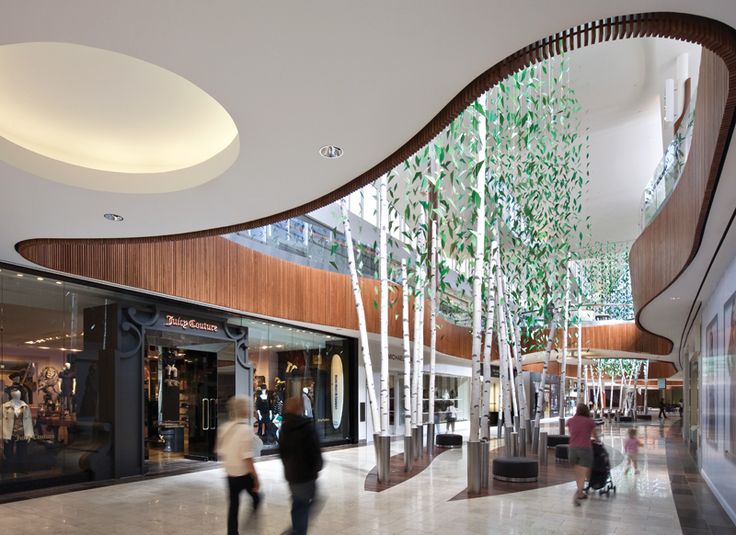4 Signs It’s Time to Redevelop a Shopping Center
Everywhere you look in Wichita, properties are being redeveloped. The Broadway Autopark parking lot is turning into apartments, Union Station has moved into the second phase. But do you know when the time is right for redevelopment?
Regency Centers put together this article on identifying the signs that a property is ready to be redeveloped.
The role of redevelopment is playing a needed part in transforming old, worn-out malls and shopping centers into vibrant centers of shopping, entertainment, and the outdoors. Many industry leaders, such as those present at the 2016 Urban Land Institute’s “Mall of the Future” seminar, see redevelopment as a compelling response to the influence of technology on brick-and-mortar retail. Panel member Matt Billerbeck of Callison RTKL said, “People are tired of every place being the same as every other place,” which speaks to the need for shopping malls to improve customer experience.
Redevelopment of existing assets is trending across the U.S. as traditional enclosed malls are being redesigned as town centers and shopping centers. Villages, featuring walkability, entertainment, and interaction are surpassing the traditional shopping experience. One of Regency’s most recent redevelopment projects is the 93,248 SF aging center of Colonial Square in Wayzata, MN. A STARR Award winner for its ingenuity and community integration, the redevelopment of Colonial Square successfully maintained the original architecture and historical design, which was important to the surrounding community. However, Regency incorporated modern features like improved walkways, LED lighting, additional green space, new doors, and energy-efficient glass storefronts to make this project a success.
Redevelopment must be a thoughtful consideration when a shopping center shows signs it is time for change. Here are a few signs that say the time for redevelopment is now:
- Vacancy
Landmark Regional Shopping Center, in the Washington D.C. Metro area, was built in 1965. Once an East Coast attraction for designer department stores, its vacancy had dropped to 40% when investors made a change. The redevelopment of this fully enclosed mall translates to “a 51-acre open-air neighborhood center with a 380-unit apartment building and a traditional street grid lined with restaurants, sidewalks, and trees.” (Source: Washington Post)
- Accessability
Shoppers in urban areas desire convenient access to the centers they visit. Transit is a growing concern for the modern shopper, and retail center owners can look to redevelopment as a way to meet this expectation. A before and after account of The Bloc in Los Angeles reveals a once-enclosed Macy’s Plaza into an open-air center with easy access to local transit. According to Clare De Briere, The Ratkovich Company’s COO and EVP, “The Bloc will be fully accessible via multiple modes of transportation: walking, biking, driving, ride-sharing and public transportation, as well as the first dedicated Metro Line connection point in the city.”
- Market Climate
Tysons Corner Center, another D.C.-area retail center, is responding to the Washington’s booming apartment market. The owner has committed to a $500 million redevelopment effort to connect the mall to a handful of professional and residential conveniences via the Silver Transit Line. Michael Cohen, architect with Elkus Manfredi, explained of a 2011 redevelopment of White Flint Mall, “It’s going to be more of a town, in a way. So you’re not making a mall, you’re making a town, a community.” (Source: Washington Post)
- Experience
Shoppers—especially the growing majority of Millennials—are seeking places to shop, be entertained, and spend time with friends in comfortable, fresh environments. Vernon Park Mall in North Carolina related this as a sign it was time for a redesign as evidenced by their plans. In the redevelopment of Vernon Park Mall, JC Penney becomes a 135,000 SF recreation center with go-karts, mini golf, rock climbing, and more. A 70-room hotel serves as a backdrop to Firestone Auto Care center, and the redesign incorporates multiple meeting rooms, a wedding boutique, arcade and video game center, and a craft brewery. Finally, Kinston describes the “crown jewel” of the redevelopment—a massive sports complex large enough for 8 basketball courts, 16 volleyball courts, 2 indoor soccer fields, 12 tennis courts or two field hockey courts. (Source: Kinston) Now that’s a revolution in the shopping experience!


